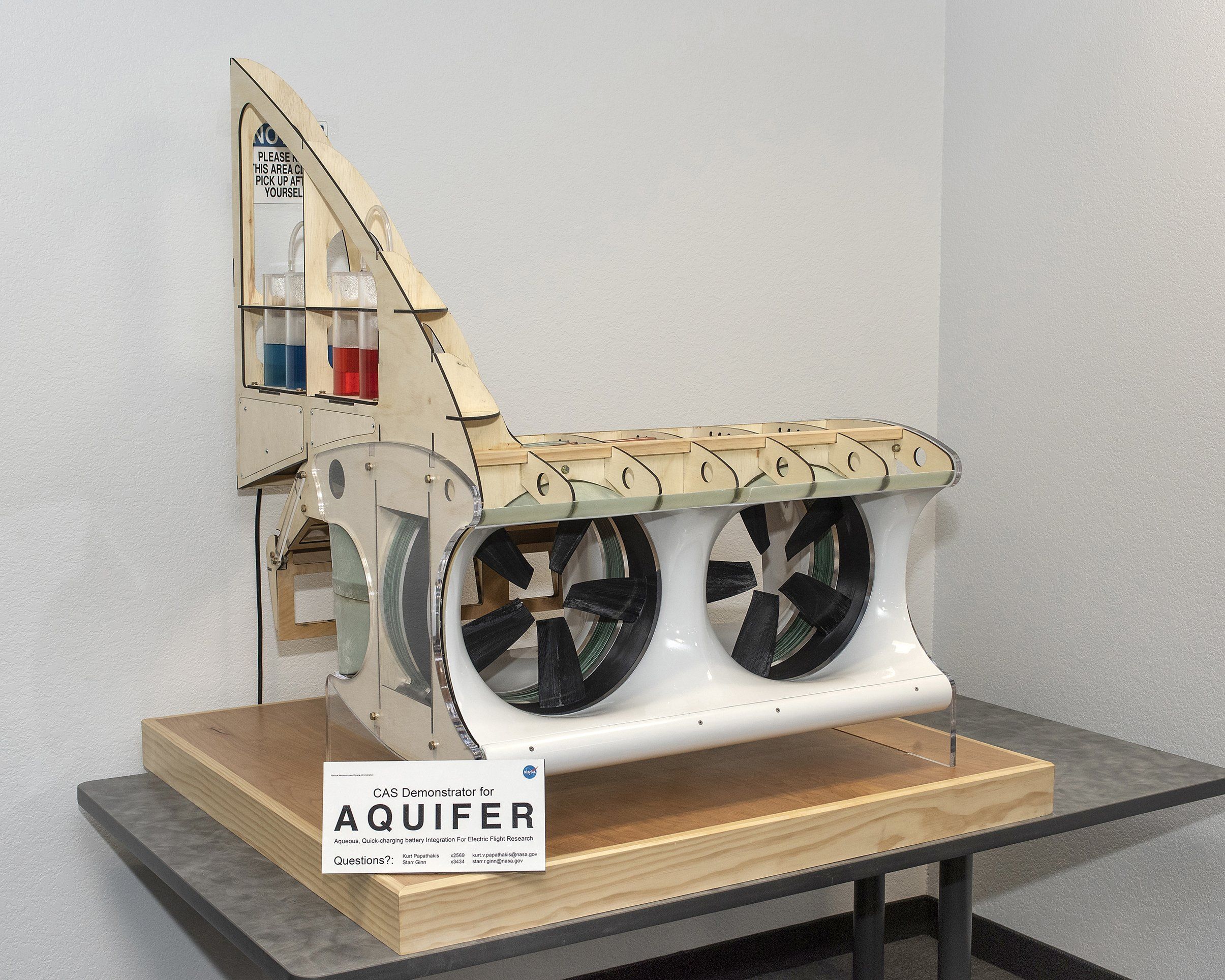Image: NASA/Ken Ulbrich
NASA has announced that it will be allocating resources for three aviation-oriented ideas as part of its Convergent Aeronautics Solutions (CAS) project. The ideas selected for the project’s 2019 fiscal year are a seamless composite assembly technique, new ways to reduce and shed heat generated by an electric motor, and replacing lithium batteries with a water-based option. The concepts were chosen from among more than a dozen proposals.
According to NASA, the composites project is working on a new manufacturing technique to bond composite structures together, potentially removing the need for bolts and rivets and resulting in a seamless, fully bonded part. In addition to exploring new designs for electric or hybrid-electric power systems, the High-Efficiency Electrified Aircraft Thermal Research (HEATheR) project is aiming to reduce the size and number of parts needed for an electric motor, resulting in less heat being generated. HEATheR is also looking into ideas for shedding heat, which include using the skin of the aircraft “as a sort of radiator.” The last idea chosen for CAS this year is the Aqueous, QUick-charging battery Integration For Electric flight Research (AQUIFER) project. AQUIFER is exploring aviation applications for a rim motor powered by a flow battery, which uses an iron-infused, water-based solution to generate electricity.
“This year’s selections represent a broad range of research topics,” said director of NASA’s Transformative Aeronautics Concepts program John Cavolowsky, “yet each could significantly contribute to building future aircraft that are more energy efficient, produce fewer emissions and are quieter.” NASA says the goal of CAS is to give new ideas “time and resources to determine if they are technically feasible and perhaps worthy of additional pursuit within NASA or industry.” This will be the fourth year for the project.


































